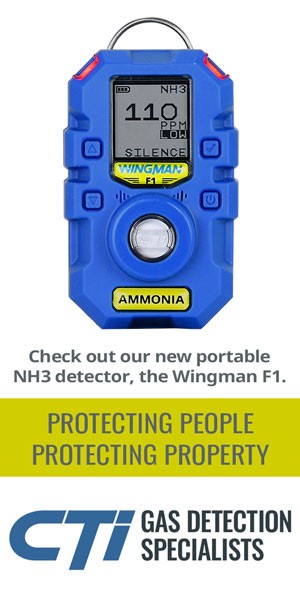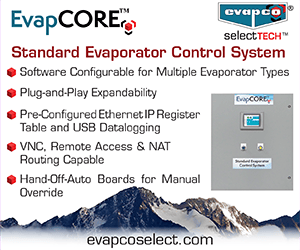IIAR’s Virtual Conference Sunday Session Will Focus on Secondary Coolants
The session will focus on the application and design of secondary coolant systems. As end users seek alternatives to replace their HFC-based systems or to reduce the charge of their ammoniabased systems, the trend for using reduced-charge ammonia and propane as a “high side” refrigerants in combination with secondary systems is becoming more widespread.
“The use of secondary coolants in refrigeration systems is becoming more popular in both commercial and industrial refrigeration,” said Eric Smith, IIAR’s vice president and technical director and one of the session’s organizers. “This permits the refrigerant charge and equipment to be concentrated in a machinery room, much like common commercial a/c chiller systems.”
The June 5 presentation is intended to familiarize end users and designers with the range and properties of secondary coolants available and their applications. The seminar will also cover pumping and piping system design techniques that can minimize energy costs. Additionally, the use of carbon dioxide as a “volatile brine” will be covered. Instructors will demonstrate engineering calculations, and case study examples of successful applications will be provided.
The lead-off speaker, Dave Malinauskas, president of the session’s sponsor, Cimco Refrigeration, said it is increasingly important for industry professionals to start discussing these new, hybrid systems which conflate smaller, lowcharge ammonia refrigeration systems with other types of refrigerants.
“When we look at both [ the commercial and industrial refrigeration] markets, the industrial side is dominated by ammonia, and the commercial side is dominated by synthetic refrigerants,” Malinauskas said. “Each has its own challenges.”
Both markets are currently under increasing pressures. On the commercial side, regulatory agencies are enacting increasingly strident guidelines on synthetic refrigerants known to be detrimental to the environment. The result is that refrigerant manufacturers are developing blended solutions that adhere to the guidelines but are less effective – meaning higher costs for end users, Malinauskas said. This is prompting the commercial industry to look more at natural refrigerants, such as ammonia.
On the industrial side, regulatory agencies are more concerned with the safety of these systems. “A lot of the pressures we see today are in terms of charge reduction – how can we reduce the amount of ammonia in this system,” Malinauskas said. “Both of these markets are converging on a solution that would involve low-charge ammonia systems that utilize a secondary coolant.”
This convergence, Malinauskas said, is “not a matter of if, but when.” That is why he feels it’s important that IIAR offer such educational sessions , of which he hopes membership will take full advantage.
That sentiment was echoed by Andy Pearson, group managing director at Star Refrigeration. “This is a chance to hear speakers from all over the world with decades of experience in the specialist topics they are addressing, and you don’t even have to leave home,” he said. “The original Sunday afternoon session would have been a good way to start your IIAR meeting, but there’s still a chance to gain the technical benefit through the webinar presentations.”
The schedule of the educational session is as follows:
- The business case for using secondary refrigerants Dave Malinauskas Cimco Refrigeration
- Secondary refrigerant properties and their ranges of application Roger Rosander Temper Technology AB
- Variable speed “smart” pumps applied to secondary refrigerants Peter Korzeniewski Grunfos
- CO2 as a secondary coolant: Case studies Andy Pearson Star Refrigeration
Finally, once the presentations conclude, there will be ample time for an in-depth question and answer session from the audience.
“Industrial refrigeration has been squeezed by two opposing forces over the last thirty years,” Pearson concluded. “The intelligent design of secondary systems is a good way to overcome those challenges and satisfy both sides.”
those challenges and satisfy both sides.” To learn more about the session or to register for the 2020 IIAR Online Conference & Virtual Expo, visit www.iiar.org.












